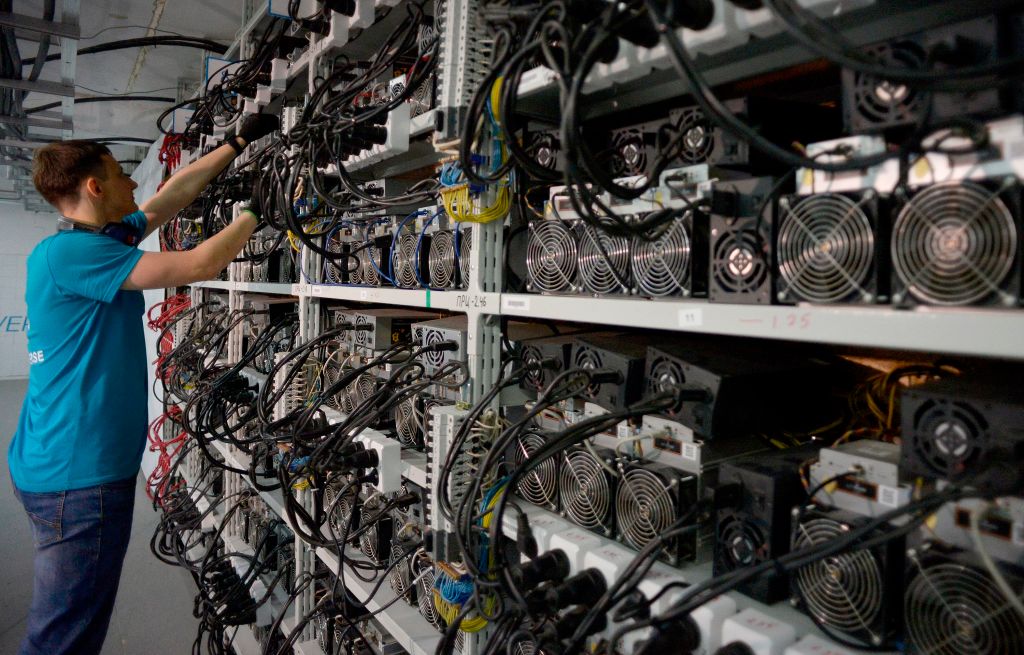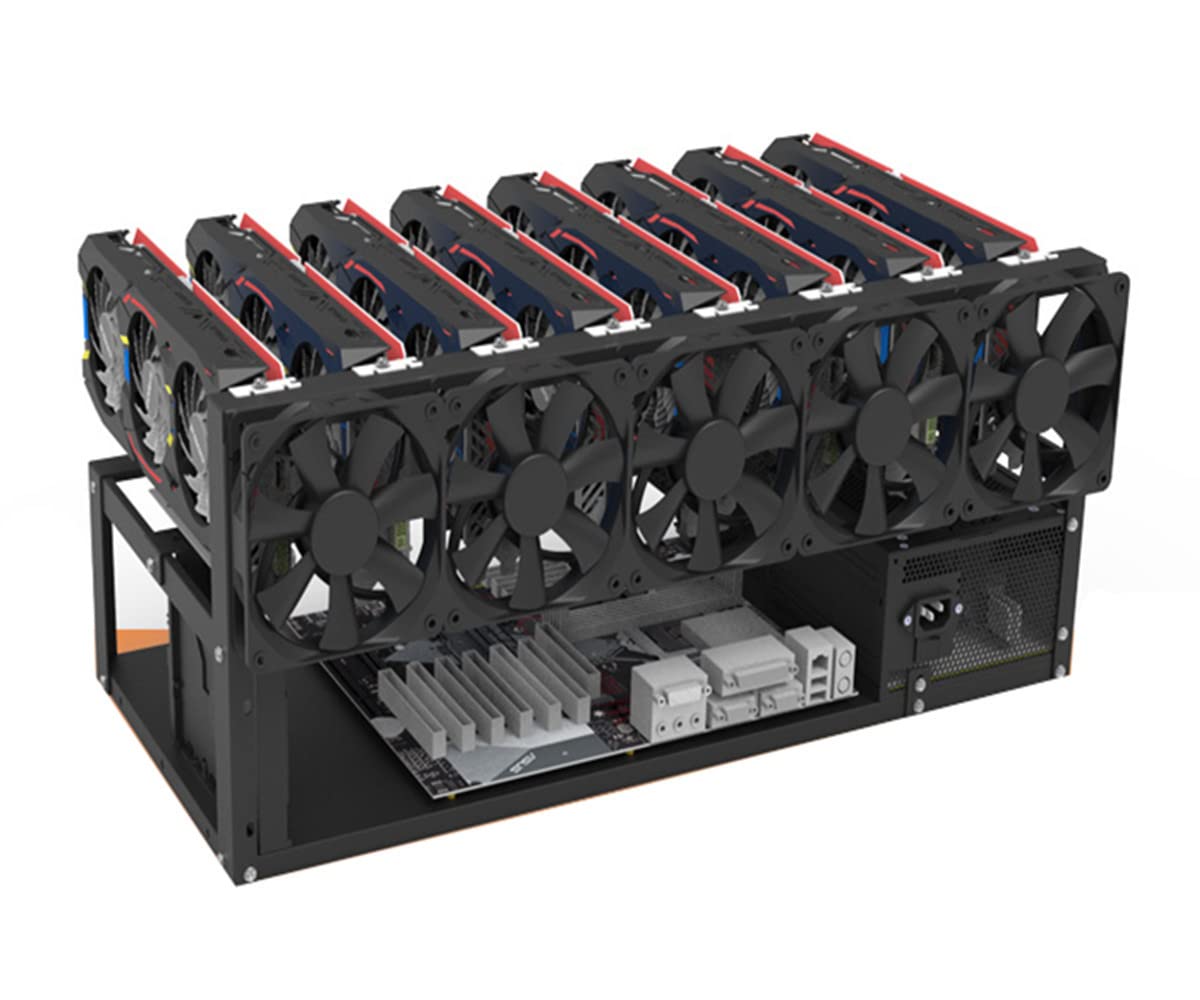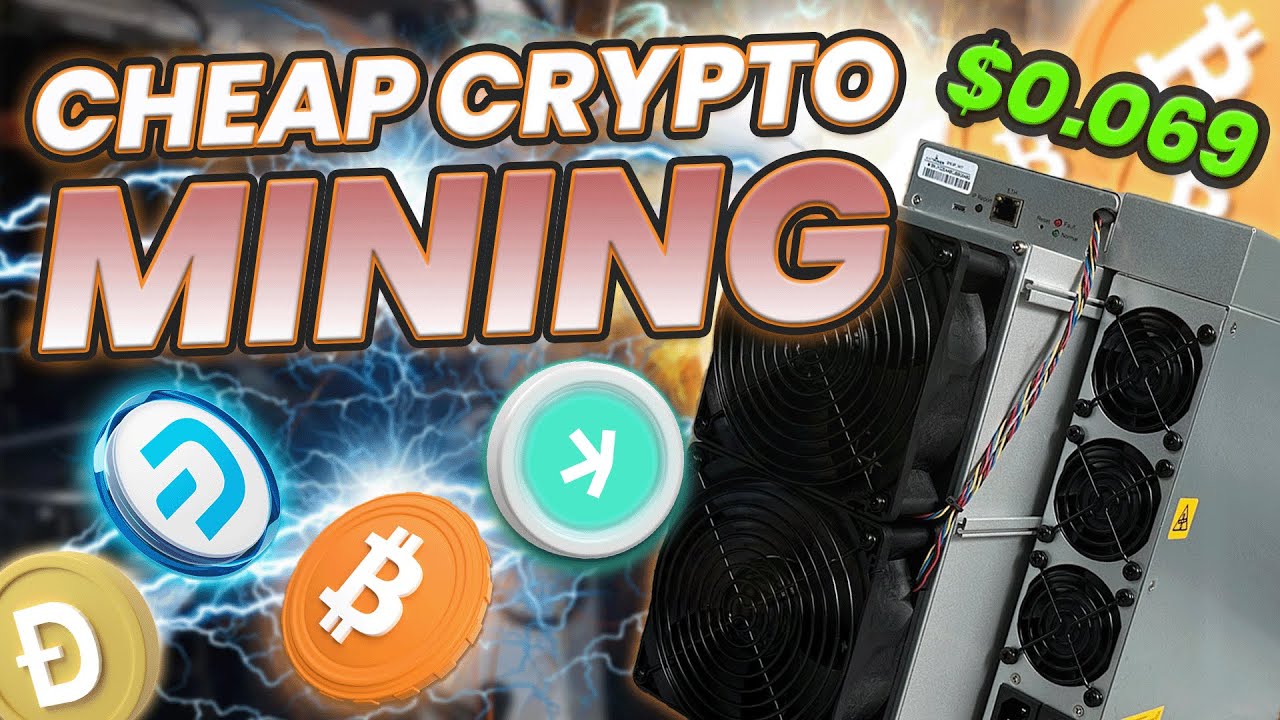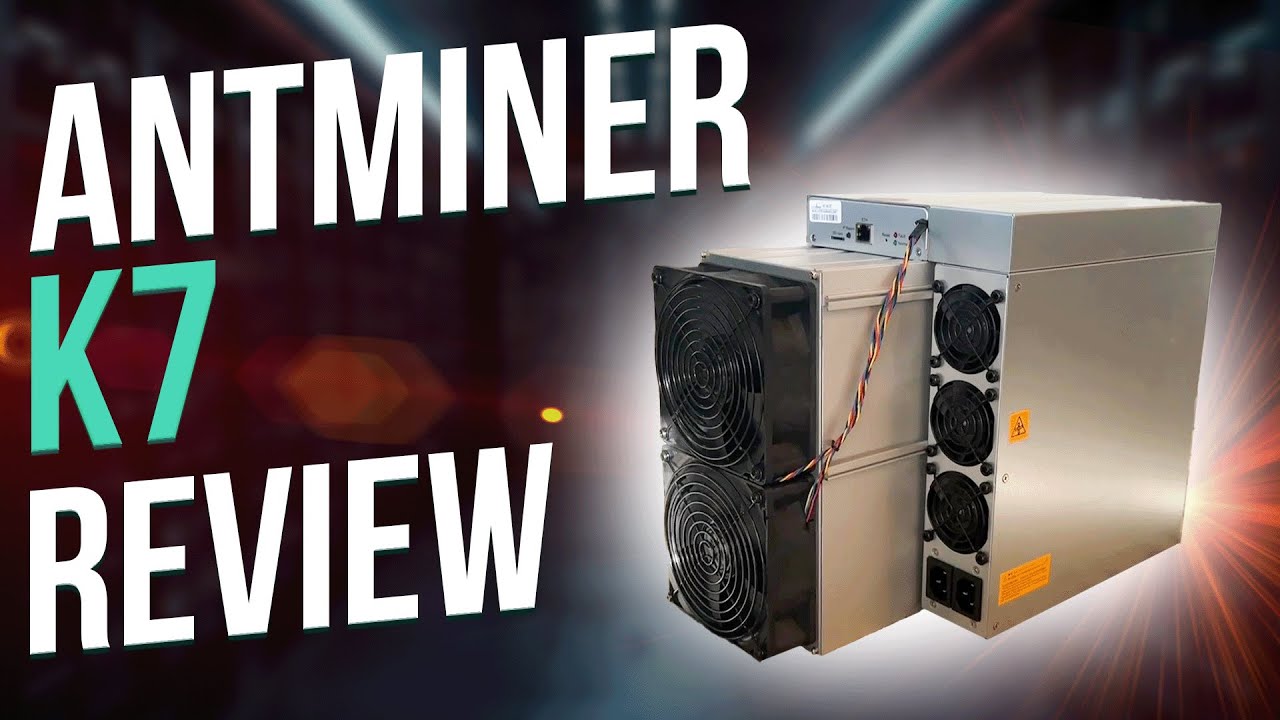Before Ethereum moves from proof work to the proof of stake consensus model, ETH miners will play a significant role in validating the transactions and keeping the network live. So if you are considering setting up an Ethereum mining rig and looking for the best Ethereum miners – I have got you covered.
I have researched and listed some of the profitable, cheap miners for Ethereum. I suggest you read the sections after the list as I have covered other aspects of ETH miners and some critical updates regarding Ethereum mining and its relevance after ETH 2.0 launch.
Top 10 Best Ethereum Mining Hardware 2023
1. Radeon R9 295X2
It has a high hash rate of 46 MH/s of the Ethereum GPUs on the market and has a power consumption of 500W. Priced at $600, it is slightly expensive but is preferred because this GPU is an effective combination of two of the most powerful GPUs in the current age.
It has a power cost per day of $1.44 and a return per day of $2.23, and the cost per MH/s is $13.04 and return per year is estimated at $586.43 approx.
It is considered to be one of the top ETH miner. It is an extremely advanced multi-core graphics processor. It has a liquid filled cooling system accompanied by two fans and is one of the fastest GPUs that AMD has put onthe market. Unlike the traditional radiator block and fan, this GPU comprises of a liquid cooling system from Asetek, and each GPU has its own cooling block.
Although there is a central fan that pushes air over both the cores, most of the cooling comes from the coolant that is pushed into the radiator block. This leads to a much better cooling system. This card costs the most among other mining cards available but provides a return of $2.23 per day. It can also mine through enough Ethereum to pay for itself in less than a year, approx 269 days.
Pros
It will rake in more per day than any other graphics card available. It has a brilliant profit ratio which makes it seem like a good choice despite its heavy price. It is a fast and powerful GPU with a great cooling system.
Cons
It is an expensive GPU to use in your mining rig. Not only is the initial set up costs much higher, the power costs are quite steep as well. May not be suitable for early beginners. The Radeon R9 295X2 may not be ideal for a new mining operation but has very good potential for profit.
2. Radeon R9 HD 7990
The r9 295×2 hashrate is 36 MH/s which is the second highest rate among the best cards for ethereum mining, second only to Radeon R9 295X2. If you looking to built the best ether mining hardware, then you have to have this card.
The power consumption of 375W at the wall and each GPU has a return of over $470 annually and has a profit ratio per day of 56%. Available on online retailers such as Amazon, this is one of the most cost-efficient alternatives for Ethereum miners. The Radeon HD 7990 come with a hash rate of 36 MH per second. It has a payback period that slightly exceeds one year. It has a daily cost estimated at $1.08 and a return of $1.29.
Pros
Second highest hash rate It is budget friendly Moderate power consumption Each year, the expected ROI is $470
3. AMD Radeon RX 480
One of the most cost-efficient and cheap Ethereum mining rig with a hash rate of 25 MH/s.
Power cost per day is significantly lower than the already mentioned hardware at $0.4320.
It gives a return per day of $1.21 and therefore a return per year of $440.91.
Its cost per MH is only $7.96 which is highly sought after in the cryptocurrency market. However, it should be noted that Radeon RX 480 has a 4GB version that runs at 7 GHz and a more expensive 8GB model that runs at 8 GHz. Compared to the 8GB model, the 4GB model runs slower by about 2-3 MHz. Hence, the 8GB version is recommended for all mining purposes. The power of Radeon RX 400 can never be undermined, and RX 480 is no exception yielding good power results.
Pros
The most affordable choice for miners Good hash rate and better return per day
Cons
Lack of cooling facilities. Lack of overclocking for GPU frequencies
4. Radeon RX 470
It has a moderate hash rate of 24 MH/s Same power cost as Radeon RX 480 at $0.4320
Its cost per MH/s is $9.13 giving a return per day of $1.15 and yearly outcome of $418.16.
During Ethereum mining on RX 470, with the clock speed set at 1300 rpm, the GPU temperature was at 70-degree Celsius. Therefore, increasing temperature manually seems like the better option, especially if you are mining coins whose algorithms use graphics processor resources more intensively. The power consumption seems to be higher than that of RX 480. Most users run Radeon RX 470 without facing any software difficulties.
Pros
It is equipped with an eight pin PCI-E connector Good cooling system 1260 MHz graphics processor clock speed
Cons
RX 470 is equipped with slow memory. Therefore mining will be slower.
5. NVIDIA GTX 1070
It can mine at a hash rate of 30 MH/s while consuming just 100W of power.
It has a VRAM of 8GB GDDR5 and a power draw of 25W. The initial mining performance was quite noteworthy while the stock clock card mined Ethereum at a hash rate of 31MH/s. A key feature is that a lower price, it brings out the performance qualities of the 1080 model. It has a GPU architecture in Pascal and a memory speed of 8 Gbps.
GTX 1070 – Which one to buy?
Despite having 3 fans for its cooling system, users still complain that GTX 1070s have the weakest fans compared to its counterparts.
While Founders Edition GPUs have great stability and above average hash rate, their fans tend to be among the noisy ones.
ASUS Strix is hugely sought-after. Despite its high cost, users get a good hash rate and quiet and durable fans. The Zotac 1070 AMP has a very good hashrate and is attached with two coolers.
When in high demand, GTX 1070 can get quite overpriced, but if you find it at a decent price, it has proved to be a good performer. By using an overclocking feature, your hashrate can increase by 10% to 31MH/s. With plenty of VRAM and reasonable power consumption, it is highly sought after by miners.
6. Geforce GTX 1080 Ti
The GTX 1070 Ti is being dubbed as a new-generation GPU comprising of a ton of interesting features.
The GTX 1070 can be configured up to 32 MH/s of hashrate which can be achieved using GTX 1070 Ti. It has a power draw of 120W along with an 8GB GDDR5 256 bit memory.
One of the key features is the cooling system. The card features three fans and each fan is turned off by default and will start spinning only after the card reaches 64 degrees.
The Windforce fans along with the composite heat-pipes make it 50% more efficient than GTX 1070 FE. With a high amount of RAM and great hash rate, this card can mine Ethereum for years together. However, the cards high upfront costs and power draw means that profitability will be a slow process. It is sold at $800, but mining demand can increase the price to over $1000.
Also, note that GTX 1070 Ti features 432 CUDA cores which makes it faster for Ethereum mining because of its 8GB GDDR5 memory at 8 gigabytes per second. The clock of 1070 Ti is 100 MHz higher too, and it is observed that both editions hash at the same rate no matter the difference in core strength. The memory subsystem performance showed that while mining, some of the GTX 1070/1070 Ti cards stayed at 2000 MHz while others dropped to 1900 MHz range. This can be resolved by manually overclocking the memory to its maximum to get the best results from the card. The NVIDIA Geforce GTX 1070 Ti Founders Edition can be bought at $449 which isn’t too expensive considering that GTX 1070 FE could be purchased at $399.
Pros
Great cooling system Silent and good fans Stylish and fancy design and interface Excellent build quality, the use of high-end MOSFETs and capacitors adds to its lifespan and stability.
Cons
Low hash rate if used on factory settings. Higher power consumption. Price is considerably high when compared to its alternatives.
7. GeForce Titan XP
Although this model is priced at $1400 and is comparatively much more expensive than its counterparts, it has an impressive hash rate of 35 MH/s and can be clocked up to 42 MH/s.
The average power consumption of 200W. Packed with 12GB of GDDR5X memory, it has an effective data rate of 11 Gbps.
8. Titan V
The Titan V series has an average hash rate of 70MH/s and is priced at $3000. The expected power draw of 250W which is a minor drawback when compared to other cards. It has six graphics processing clusters and 5120 CUDA cores and is packed with a dual slot card with 12GB HBM2 RAM, and the total memory bandwidth reaches up to 652.8 GB/s.
Accompanied by a massive 21.1B transistor powering the TITAN V, it has a base clock of 1200 MHz and a boost clock of 1455 MHz
Its outer aluminum body is machine finished and heat treated for added agility and strength.
According to a few test run results, Titan V achieved a 70 MH/s for Ethereum mining and when overclocked it surged up to 77 MH/s. The card is a powered by a Volta-based GV100 GPU which is also found in Tesla accelerators. The card performed equally well with other cryptocurrencies also making it a suitable option for miners. NVIDIA Titan V stood testimony to the fact that the new Volta based GPUs would excel at mining and be the top toy sought after for mining. Owing to its spectacular hashrate, it is also priced pretty high.
However, a less expensive version of this card can be expected in the markets real soon proving to be the ultimate tool for Ethereum mining.
9. AMD Radeon RX Vega 64
With a hash rate of 30 MH/s and a power draw of 210W, this card has excellent mining performance loading with extreme clocking potential. The RX Vega comes in three different versions – a reference air-cooled card, a limited edition model, and a liquid cooled variant. All three cards clock the memory at the same 945 MHz base clock. However, the liquid cooled model increases the base clock speed by 12.8 percent and also increases the boost clock to 8.5 percent.
Vega is a part of the AMD GPU architecture hence it is not in abundance and is hard to find.
The RX Vega features all 4096 stream processors present on the chip and can match the overclock potential of Titan XP at almost half the price of $1300.
While the air-cooled produces too much run heat, the special edition can stay cool enough to draw 42 MH/s at just 300W. It comes in two versions of the RX Vega 64 air cooled and RX Vega 56 cards and looks nearly identical.
10. AMD R9 390
Another new high-end card produced by AMD, it is priced at $540 it has a hash rate of 30 MH/s which gives it an impressive performance at an affordable price. Due to this, it may lack in availability.
This card has a power draw of 235W and was built using older yet upgraded hardware, it can prove to stand its own ground when compared to the NVIDIA Geforce GTX 980 series and is also less expensive. This makes a suitable and viable option for miners. A key feature of the 390X is that it uses Graphics Core Next architecture which has been used by AMD since 2011. The Hawaii core that was the base of the R9 290X series has been renamed as Grenada to build the R9 390X series. It has a staggering 2816 stream processors that are split into units with 64 individual processors inside. It is a big GPU that may require 6 and eight-pin power connectors.
The card is fixed with three fans which produce a considerable amount of noise. However, it is automatically turned off at a low load, which was a recently implemented feature.
These cards use a Graphics Core Next architecture which makes it fall behind NVIDIA’s Maxwell designs. It is a highly conventional card with the option of tweaking if you want to do something different. The R9 390X is competitive in terms of price, speed, and memory but falls behind NVIDIA in areas such as power consumption, noise generated, heat and overclocking.
Pros
Ahead of GTX 980 in terms of performance. Cheaper than NVIDIA versions. Board partner versions are also available.
Cons
More power consumption Less versatile architecture Many R9 390X models are bulky and heavy requiring both 6 and eight-pin power connectors.
11. AMD Radeon RX 580
It has a hash rate of 18.5 MH/s and a power draw of 185W and is a minor update of the last generation RX 480 cards that were produced. The RX 580 has a 1340 MHz boost clock speed paired with 8GB GDDR5 memory. Its specifications depend on which third-party manufacturer was used and also the amount of RAM.
The small upgrade in speed bring it in close comparison with NVIDIA Geforce GTX 1060, and the cheapest model is at 200 pounds. It has good cooling systems and uses a Polaris architecture which isn’t the popular choice for Ethereum mining. Long considered as the only choice for ETH mining, the RX 400 and 500 series is slowly being put out of use.
Pros
Excellent full HD performance Decent 1440p performance Lower priced cards have great value
Cons
Card lack compatibility






